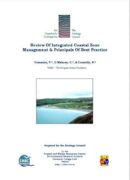
Review of the CAP Rural Development Plan 2000-2006
This report, prepared by the European Forum on Nature Conservation and Pastoralism was written at a time of great change in the agricultural sector. A mid-term review of the CAP was underway and Ireland's REPS was also being fully reviewed.
Read moreRead lessThe report examined in particular the impact of agriculture on aspects of our natural heritage. It expresses the positive view that certain types of agricultural activity should be more valued because of their tremendous contribution to maintaining diversity within the nation's natural heritage.
The report goes on to point out that in many instances it is these very activities and the habitats they maintain which are threatened by competition from other land uses.
- Published by: The Heritage Council
- Author(s): D.Gwyn, L. Jones, Eric Bignal, Liam Lysaght, David Baldock and Jim Phelan








